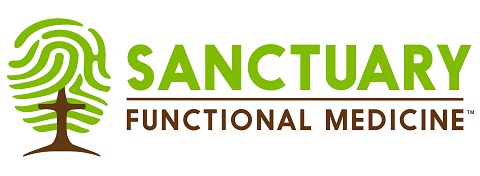Zearalenone is produced by a number of Fusarium mold species. Many describe it as an estrogenic mycotoxin due to its similarity to this hormone and its obvious estrogen like effects in humans and animals (5). This fungus grows on corn, wheat, barley and rye. It remains intact during normal cooking although higher temperatures can partially break it down. Its estrogen effects arise through both estrogen receptors alpha and beta (5) In animals, infertility, uterine swelling, ovarian atrophy, and reduced milk production have been noted (10)
Zearalenone from Chemspider.com
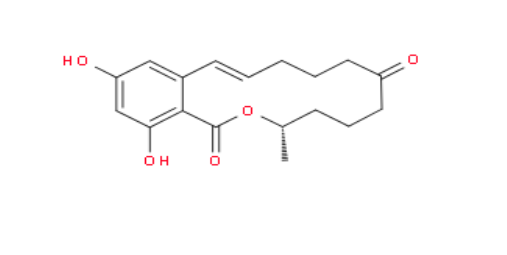

Fumonisins are a group discovered in 1988 as hydrophilic (water loving) mycotoxins produced by Fusarium species. They have been found to cause leuko-encephalomalacia in horses and pulmonary edema in pigs (11) Besides corn as a source, they are found in sorghum, wheat, barley, soybean, asparagus, figs, black tea and some medicinal plants (12, 5). They can exert their toxic effects through interrupting sphingolipid metabolism and targeting liver and kidneys. Being hydrophilic means that they do not accumulate in animal tissue since they do not collect in fat tissue.
Funonisin example from Chemspider.com
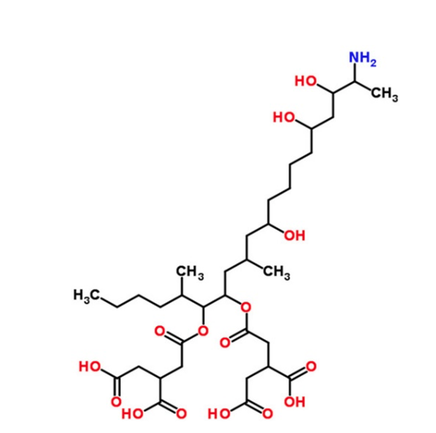

Trichothecenes were found to trigger intestinal disease in Russia as early as the 1930’s. A number of different mold species can produce these compounds. While they often produce crop damage, they are also known to cause nausea, vomiting, diarrhea, abdominal pain, headache, dizziness, and fever (13). In animals, a number of symptoms or conditions are observed including intestinal bleeding, immune suppression and slow growth. Their main mechanism of toxicity is their inhibition of ribosomal protein synthesis.
Trichothene example from Chemspider.com
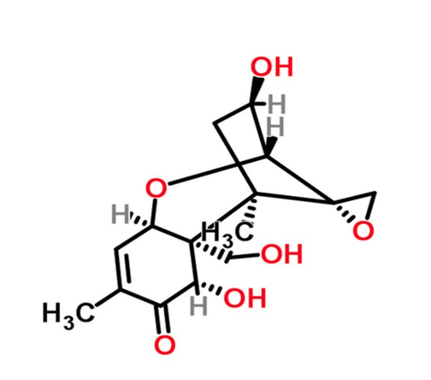

Finally, Patulin was discovered in 1943 being produced by Penicillium, Aspergillus, and Byssochlamys. This often contaminates applies, either juice and products or other fruits like pears, peaches, and grapes. It has human toxicities including nausea, vomiting, ulceration and hemorrhage (14)
Patulin from Chemspider.com
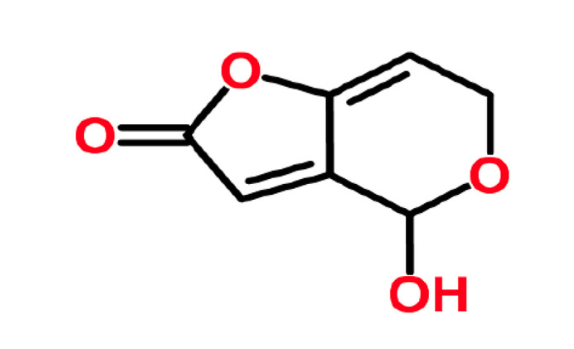

***ATTENTION***
Just because some foods “may” contain some of these toxins, you should not jump to the conclusion that you must stop eating all of those foods. For the most part, our food sources are relatively safe. Indoor water damaged environments are a greater concern for most mold toxic patients. This article only focused on their presence in our food supply. On the other hand, we do occasionally advise more sensitive patients to avoid some foods like coffee or dried fruit products. Before making major dietary changes, discuss these decisions with us or another qualified mycotoxin knowledgeable provider.
While over 300 mycotoxins have been identified, only a limited number appear to affect animals or humans. This paper covers many of the recognized human mycotoxins, but fails to mention gliotoxin, but we can address that at another time. Far more could be told about the fungi and their mycotoxin bag of tricks, but at least you have an introduction to what they are and what they can do to humans or animals. They affect multiple organ systems. They present an amazing range of structures chemically. They grow on multiple different food sources. We treat a number of patients at our office who suffer toxicities from these and a few other mycotoxins. Our functional medicine approach can diagnose and restore health in these patients over time, but first these toxins and their effects must be identified and recognized as a root cause of disease. With that first step, we can start patients on a road to a healthier, more abundant life.
- J. Environ. Res. Public Health 2017, 14(6), 632; doi:10.3390/ijerph14060632.
- Krishnamachari, K.; Bhat, R.V.; Nagarajan, V.; Tilac, T. Investigations into an outbreak of hepatitis in Western India. Indian J. Med. Res. 1975, 63, 1036–1048.
- Govaris, A.; Roussi, V.; Koidis, P.A.; Botsoglou, N.A. Distribution and stability of aflatoxin M1 during processing, ripening and storage of Telemes cheese. Food Addit. Contam. 2001, 18, 437–443.
- Magnoli, C.E.; Astoreca, A.L.; Chiacchiera, S.M.; Dalcero, A.M. Occurrence of ochratoxin A and ochratoxigenic mycoflora in corn and corn based foods and feeds in some South American countries. Mycopathologia 2007, 163, 249–260.
- Hussein, H.S.; Brasel, J.M. Toxicity, metabolism, and impact of mycotoxins on humans and animals. Toxicology 2001, 167, 101–134.
- Bennett, J.W.; Klich, M. Mycotoxins. Microbiol. Rev. 2003, 16, 497–516.
- Ostry, V.; Malir, F.; Toman, J.; Grosse, Y. Mycotoxins as human carcinogens-the IARC Monographs classification. Mycotoxin Res. 2017, 33, 65–73.
- Mantle, P.G. Risk assessment and the importance of ochratoxins. Biodeterior. Biodegradation 2002, 50, 143–146.
- Žanic-Grubišić, T.; Zrinski, R.; Ĉepelak, I.; Petrik, J.; Radić, B.; Pepeljnjak, S. Studies of ochratoxin A-induced inhibition of phenylalanine hydroxylase and its reversed by phenylalanine. Appl. Pharmacol. 2000, 167, 132–139.
- Kowalska, K.; Habrowska-Górczyńska, D.E.; Piastowska-Ciesielska, A.W. Zearalenone as an endocrine disruptor in humans. Toxicol. Pharmacol. 2016, 48, 141–149.
- Yazar, S.; Omurtag, G.Z. Fumonisins, trichothecenes and zearalenone in cereals. J. Mol. Sci. 2008, 9, 2062–2090.
- Sweeney, M.J.; Dobson, D.W. Mycotoxin production by Aspergillus, Fusarium and Penicillium Int. J. Food Microbiol. 1998, 43, 141–158.
- Sobrova, P.; Adam, V.; Vasatkova, A.; Beklova, M.; Zeman, L.; Kizek, R. Deoxynivalenol and its toxicity. Toxicol. 2010, 3, 94–99.
- Puel, O.; Galtier, P.; Oswald, I.P. Biosynthesis and toxicological effects of patulin. Toxins 2010, 2, 613–631.
- Images from Chemspider.com
Sanctuary Functional Medicine, under the direction of Dr Eric Potter, IFMCP MD, provides functional medicine services to Nashville, Middle Tennessee and beyond. We frequently treat patients from Kentucky, Alabama, Mississippi, Georgia, Ohio, Indiana, and more... offering the hope of healthier more abundant lives to those with chronic illness.
